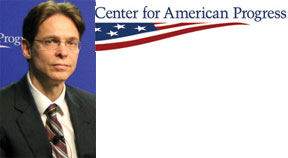 United States could realize huge economic benefits by closing racial and ethnic education gaps, new CAP Report Shows
United States could realize huge economic benefits by closing racial and ethnic education gaps, new CAP Report Shows
By closing education gaps for Black and Hispanic children, U.S. gross domestic product would be 5.8 percent or nearly $2.3 trillion larger by 2050
WASHINGTON, D.C. — The United States changing demographics will have enormous ramifications for both the country’s education system and economy in the decades to come.
A new report from the Center for American Progress (CAP) quantifies the multitude of economic benefits that would result from closing the educational achievement gap that exists between Black and Hispanic children and white non-Hispanic children, finding that the U.S. gross domestic product, or GDP, would be 5.8 percent or nearly $2.3 trillion larger in 2050 if educational achievement gaps were closed. Federal, state, and local revenues would grow by billions of dollars annually, while Social Security tax contributions would grow by $877 billion by 2050.
Black and Hispanic children make up an ever-larger share of our population and our workforce, and one of the greatest problems they face is lagging achievement gaps, said Robert G. Lynch, CAP Senior Fellow and co-author of the report.
Even using a conservative analysis, it’s clear that major public investments toward closing education gaps would more than pay for themselves in the form of increased GDP and tax revenues.
Ensuring educational equity is not just an investment in students and in schools it’s an investment in our economy, said Patrick Oakford, CAP Policy Analyst and report co-author.
But more importantly the United States risks wasting its greatest asset; human capital if it does not act to significantly lift the educational outcomes of all of our children.
CAP’s analysis projects how much greater U.S. GDP would be from 2014 to 2050 if the educational achievements of Black and Hispanic children were raised to match those of white, non-Hispanic children, finding that the cumulative increase from 2014 to 2050 would amount to $20.4 trillion. Federal tax revenues alone would skyrocket by $4.1 trillion between 2014 and 2050, or approximately $110 billion per year, and state local revenues would rise by another $88 bill-ion annually.
CAP’s analysis and the resulting data show that even very large public investments that close achievement gaps would pay for themselves in the form of significant economic growth by 2050.
CAP’s report notes that government investments in closing educational achievement gaps that cost less than an average of $198 billion annually over the next 37 years would pay for themselves, even in strictly budgetary terms.
To get a sense of the magnitude of such investments, consider that the annual cost to implement the Obama Administration high-quality; universal pre-K program averages just $7.5 billion per year over the first 10 years.
The report also notes that the benefits of closing educational achievement gaps mean more than just increased GDP and tax revenues: It would also mean higher earnings, higher material standards of living, and an enhanced quality of life for these children when they grow to be adults.
Read “The Economic Benefits of Closing Educational Achievement Gaps: Promoting Growth and Strengthening the Nation by Improving the Educational Outcomes of Children of Color” by Robert G. Lynch and Patrick Oakford. For more information or to speak with an expert, please contact Tanya S. Arditi at tarditi@americanprogress.org or (202) 741-6258.
